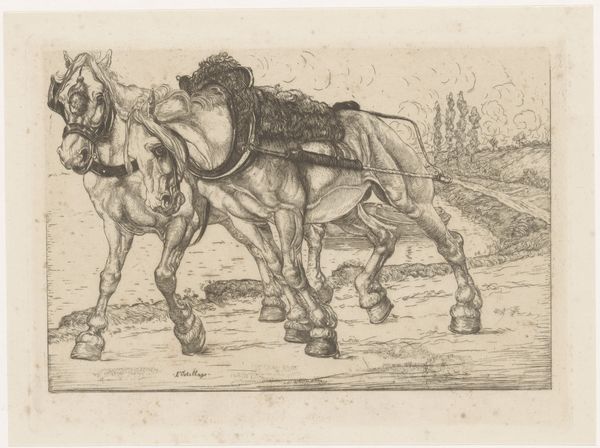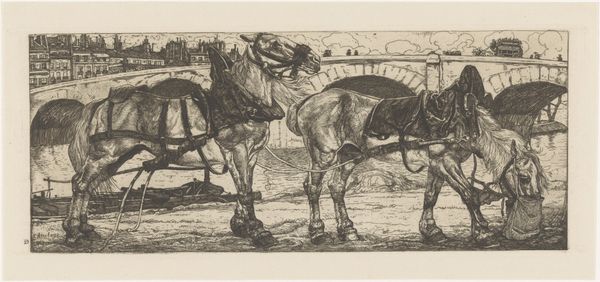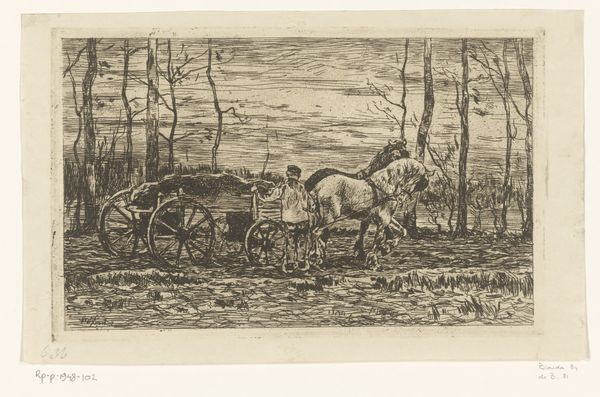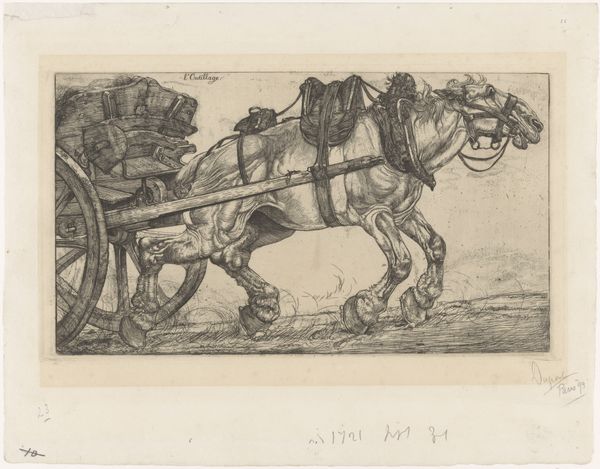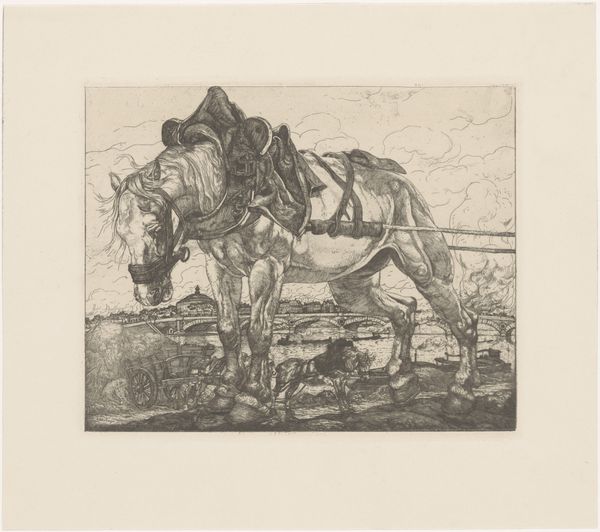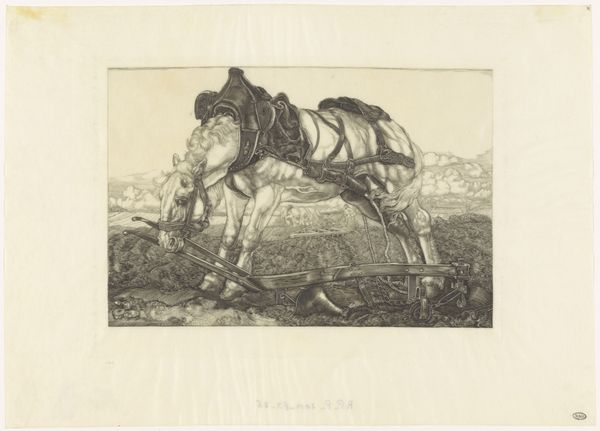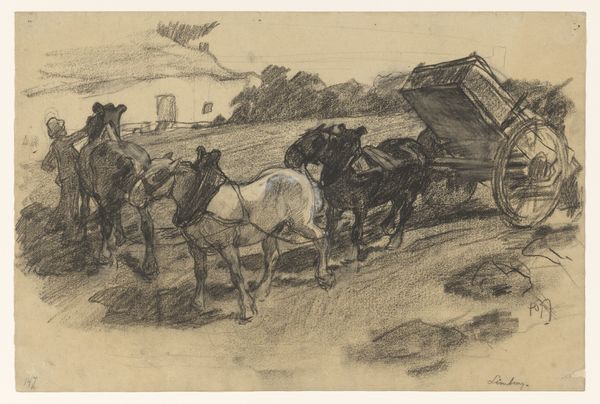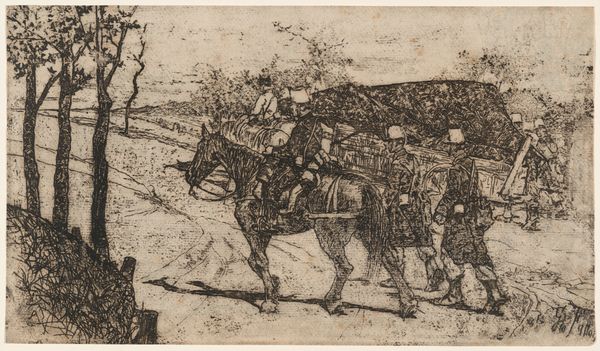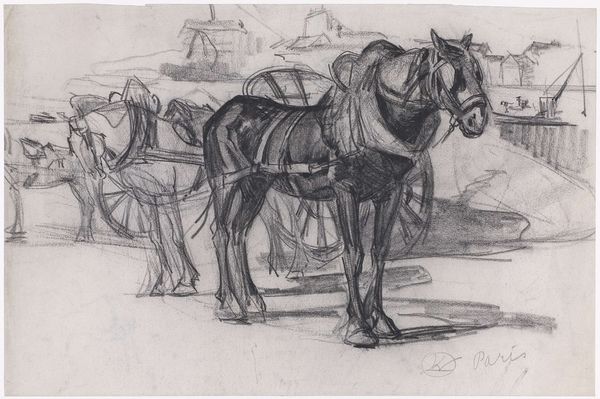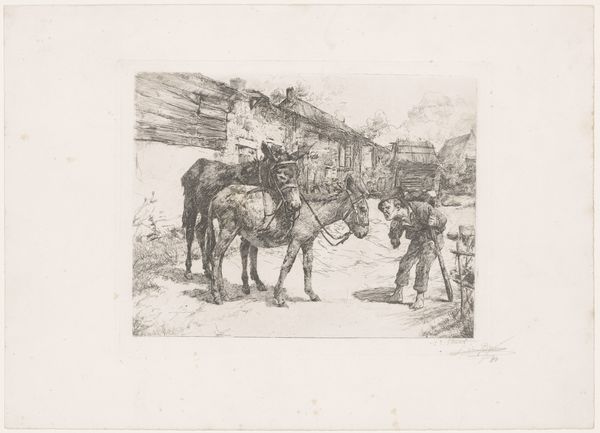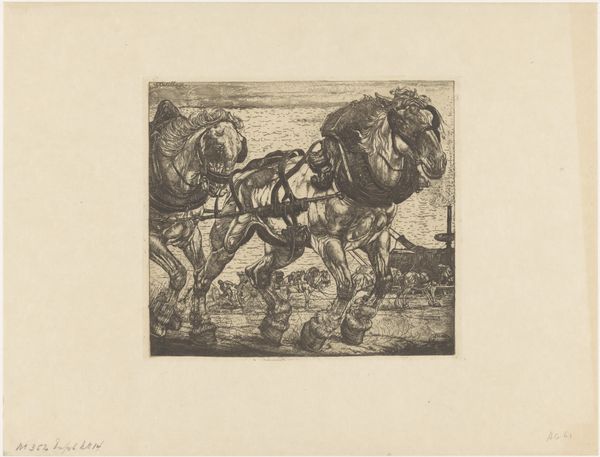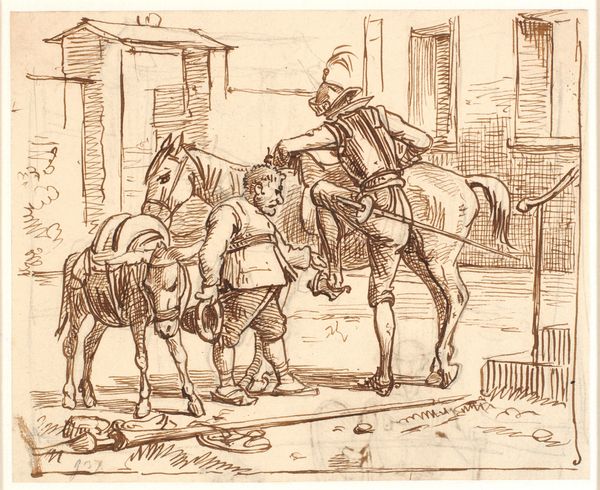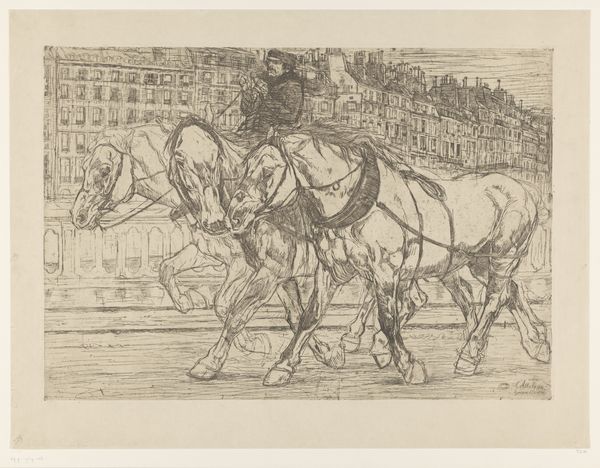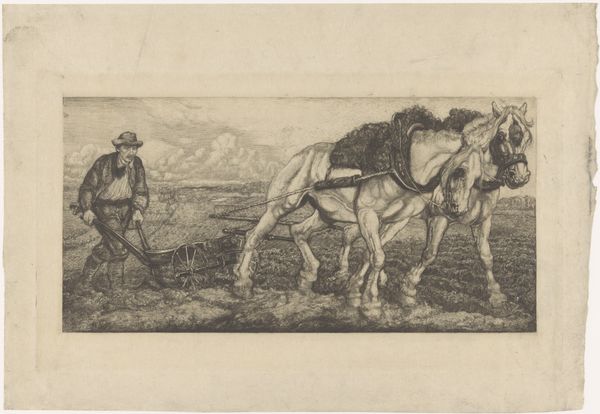
print, engraving
# print
#
landscape
#
symbolism
#
genre-painting
#
engraving
#
realism
Dimensions: height 196 mm, width 248 mm
Copyright: Rijks Museum: Open Domain
Curator: This is "Two Tow Horses Along the Marne," an engraving by Pieter Dupont, dating back to 1900. It presents two powerful horses harnessed for work along a waterside path. Editor: It's quite striking, this image. There’s a solemn weight to it, the heaviness of labor practically palpable in the way the artist depicts those stout horses. The composition really centers their hulking forms against the serene backdrop. Curator: Indeed, the interplay of labor and landscape is significant. Consider that these horses are instruments within a network of canals and rivers, vital arteries of commerce and industry. This artwork invites questions about the cultural valorization of labor and its relationship to the natural world. Editor: I'm drawn to the process, the way the engraving captures such detailed texture. The harnesses, the musculature of the horses – all meticulously rendered. It's more than a simple pastoral scene; it's a study in material engagement, a conversation between the artist, the tools, and the subject. Curator: The artist, through the medium of engraving, directly engaged with the social context. Printmaking was a way to make art accessible, placing it within a broader economy of imagery. This image wasn't destined for a palace; it was destined for reproduction and distribution, embedding it in public consciousness. Editor: The scale feels important too; these are workhorses, built to serve and carry weight. It emphasizes a relationship – a transactional relationship – between humanity, animals, and the world around them. It feels like a symbol of productivity in the industrial era. Curator: And consider that the "Marne" is a place marked by conflict, later during WWI. This serene image, produced at the cusp of modernity, almost prefigures those historical upheavals, embedding quiet industry within a narrative poised to erupt. Editor: Exactly, seeing it from this perspective now adds more dimensions. We get both the simplicity and the complex conditions in which it was produced, circulated and is seen now. Thanks. Curator: Absolutely. Considering how images interact within our culture helps to unlock deeper meanings that expand the work’s historical importance.
Comments
No comments
Be the first to comment and join the conversation on the ultimate creative platform.
